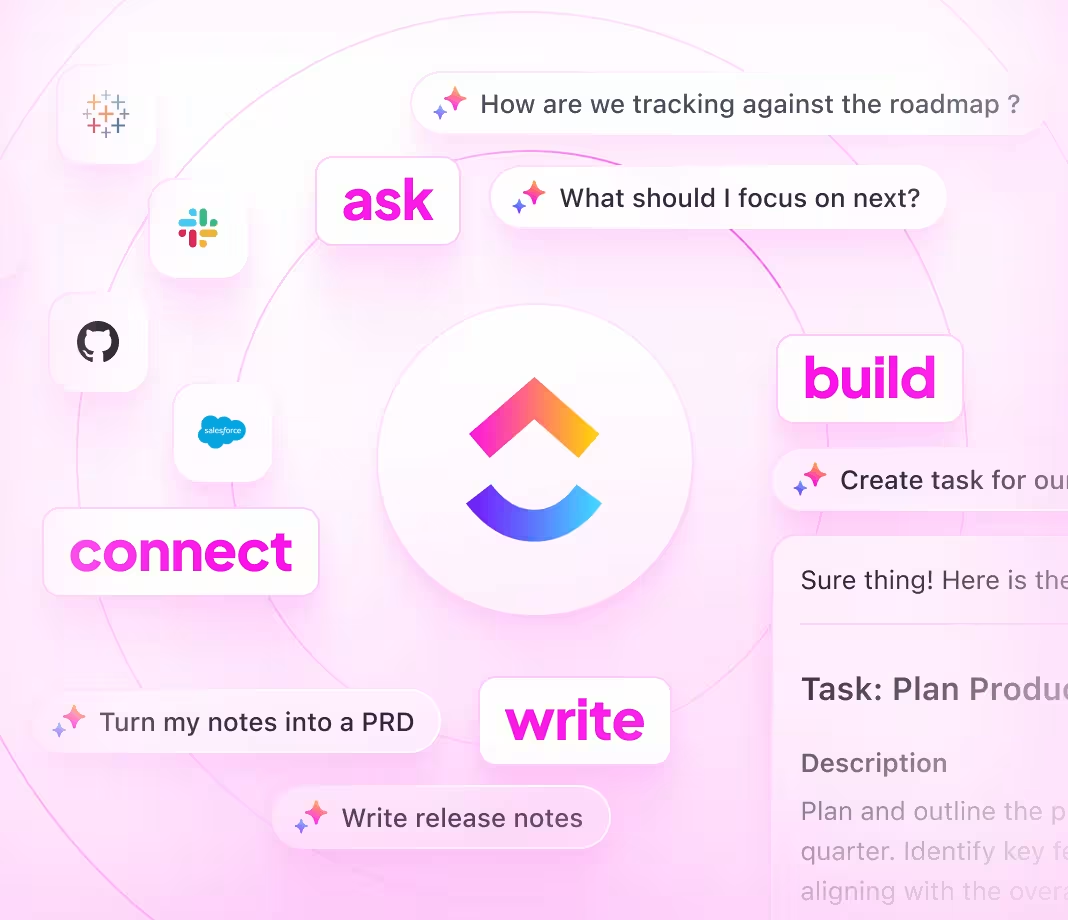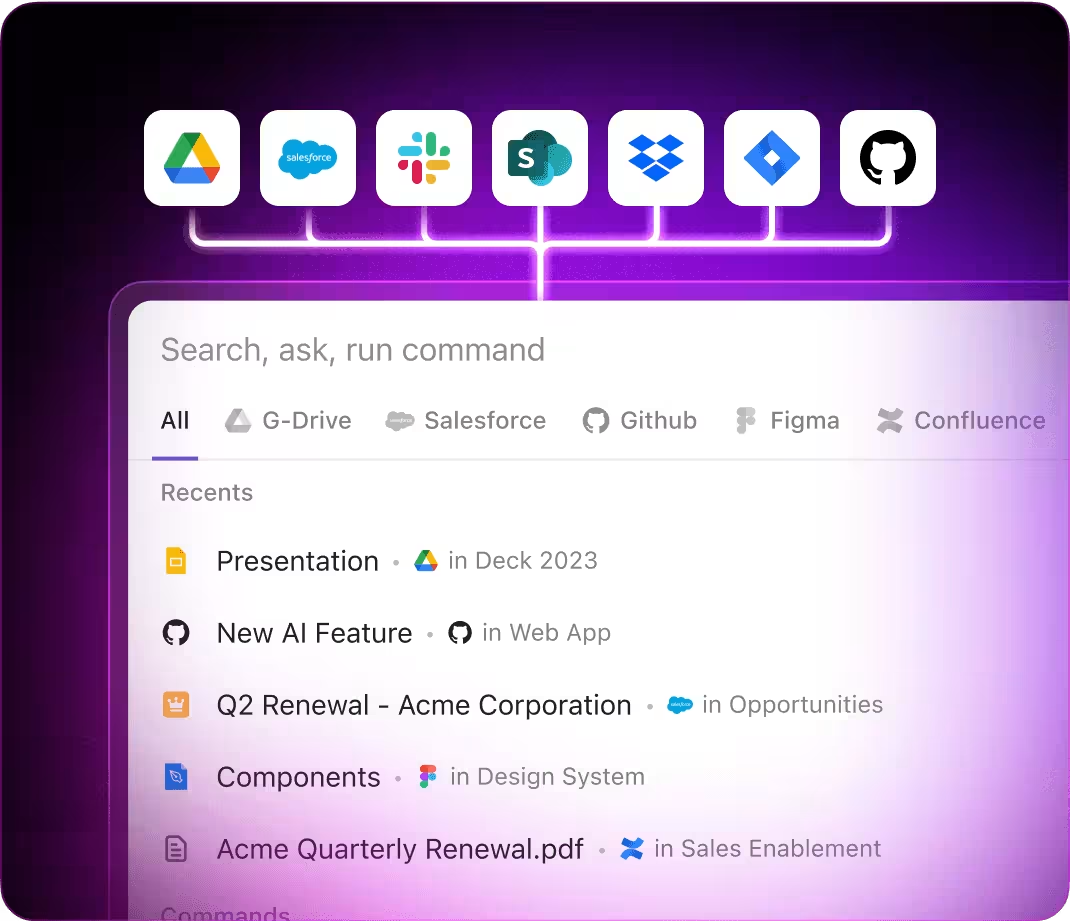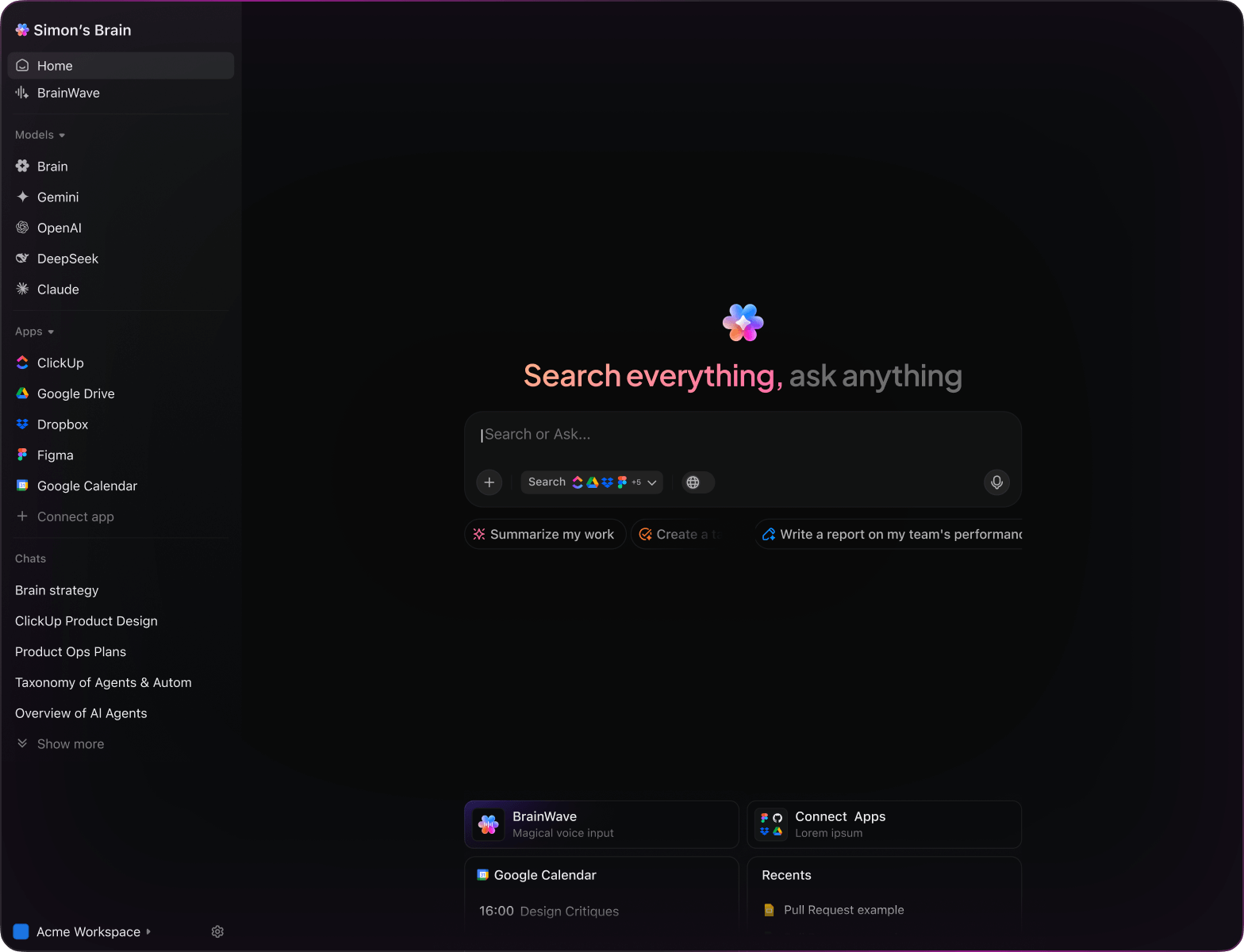AI Solutions for Mechanical Engineering
Top AI Prompts for Mechanical Engineering
Design innovative components, optimize engineering processes, and elevate your mechanical projects using ClickUp AI.

Trusted by the world’s leading businesses
AI in Mechanical Engineering
How AI Prompts Revolutionize Mechanical Engineering Tasks
Engineering innovative machinery demands more than just technical skill—it requires seamless coordination and clarity throughout the process.
From initial concept sketches to detailed CAD designs, stress analysis, and compliance documentation, mechanical engineering projects juggle numerous components and tight schedules. AI prompts are now key to managing this complexity.
Engineering teams leverage AI to:
- Quickly identify relevant design standards and material properties
- Generate initial drafts of technical specifications and calculation summaries
- Extract key points from dense engineering manuals and codes
- Transform scattered notes into clear project plans, checklists, or task assignments
Integrated into daily tools such as documents, diagrams, and project trackers, AI in platforms like ClickUp Brain acts as a proactive partner—turning ideas into structured, manageable engineering workflows.
ClickUp Brain Compared to Conventional AI
Why ClickUp Brain Stands Out
ClickUp Brain integrates seamlessly with your workflow, understanding your context so you can focus on engineering solutions, not explanations.
Conventional AI Assistants
- Constantly toggling between apps to collect project details
- Repeating project objectives with every query
- Receiving generic, irrelevant suggestions
- Hunting through multiple platforms to locate a single document
- Interacting with AI that lacks proactive engagement
- Manually switching between different AI engines
- Merely a browser add-on with limited integration
ClickUp Brain
- Deeply connected to your mechanical engineering tasks, files, and team communications
- Retains your project history and design goals
- Provides detailed, context-aware recommendations
- Searches across all your engineering tools in one place
- Supports hands-free input with Talk to Text
- Automatically selects the optimal AI model: GPT, Claude, Gemini
- Dedicated Mac & Windows app designed for performance
Prompts for Mechanical Engineering
15 Essential AI Prompts for Mechanical Engineering Teams
Enhance mechanical engineering workflows—design, analysis, and validation simplified.

List 5 innovative chassis design concepts for a lightweight drone, based on the ‘Drone2025 Concepts’ document.
ClickUp Brain Behavior: Analyzes design notes and concept sketches from the linked file to propose fresh chassis ideas.

What materials are currently favored in aerospace component manufacturing for durability and weight reduction?
ClickUp Brain Behavior: Gathers insights from internal research and industry reports; Brain Max can supplement with external data if accessible.

Create a detailed project brief for upgrading thermal management systems, referencing ‘ThermalSys_Rev2’ notes and prior test results.
ClickUp Brain Behavior: Extracts key points and technical details from linked documents to assemble a structured brief.

Summarize fatigue resistance data comparing aluminum and titanium alloys using our ‘MaterialFatigue_Q3’ report.
ClickUp Brain Behavior: Pulls tabulated and narrative data from internal files to deliver a concise comparative summary.

List the most effective lubricants for high-speed gearboxes, referencing R&D notes and supplier specifications.
ClickUp Brain Behavior: Reviews internal documents to identify commonly recommended lubricants and their performance characteristics.

From the ‘HydraulicSys_Maintenance’ document, create a comprehensive checklist for routine hydraulic system upkeep.
ClickUp Brain Behavior: Extracts maintenance tasks and criteria, formatting them into an actionable checklist within a task or document.

Summarize three key trends in additive manufacturing from post-2023 research papers and technology reviews.
ClickUp Brain Behavior: Identifies recurring themes and innovations from linked research documents and notes.

From the ‘CAD_UserSurvey_Q1’ document, summarize main user preferences for CAD software interface design.
ClickUp Brain Behavior: Analyzes survey data to highlight common feedback and design priorities.

Compose straightforward and engaging UI text for simulation result dashboards, using the tone guidelines in ‘UXVoiceGuide.pdf’.
ClickUp Brain Behavior: References tone documents to generate multiple copy options suited for technical dashboards.

Summarize recent ISO standards updates affecting pressure vessel design and their implications.
ClickUp Brain Behavior: Reviews linked compliance documents and summarizes key changes and design considerations.

Create placement and dimension guidelines for sensor arrays in robotic arms, referencing internal compliance and design documents.
ClickUp Brain Behavior: Extracts positioning rules and technical specifications from internal files to form a detailed guideline.

Develop a safety checklist for testing high-pressure systems using US safety standards and our engineering protocols.
ClickUp Brain Behavior: Identifies critical safety requirements from PDFs and internal documents, organizing them by test phase and risk level.

Compare energy efficiency features of hydraulic systems from competitors using our internal analysis documents.
ClickUp Brain Behavior: Summarizes comparative data into an easy-to-read format, highlighting key performance metrics.

Identify emerging design trends in autonomous industrial robots since 2023 from research notes and concept summaries.
ClickUp Brain Behavior: Synthesizes information from internal reports and uploaded studies to outline current design directions.

Summarize key ergonomic issues and user feedback from the ‘ToolErgonomics_Survey’ folder, focusing on materials and grip design.
ClickUp Brain Behavior: Extracts and prioritizes user comments and survey data to highlight main usability concerns.
Accelerate Mechanical Design with ClickUp Brain
Cut down on revisions, unite your engineering team, and produce superior designs through AI-driven workflows.






LLMs vs. Workflow Intelligence: How ClickUp Brain Enhances Mechanical Engineering
Discover How ChatGPT, Gemini, Perplexity, and ClickUp Brain Tackle Mechanical Engineering Challenges
ChatGPT Prompts
- Condense these mechanical system schematics into a 5-point project outline focusing on efficiency improvements.
- Compose technical documentation for a new HVAC system highlighting energy-saving features and reliability.
- Propose 3 alternative gear train designs for an industrial robot arm and explain torque benefits.
- Outline a phased development plan for integrating sensor arrays into a manufacturing line prototype.
- Review last 3 engine models and summarize top maintenance feedback for future enhancements.
Gemini Prompts
- Develop 3 alternative control panel layouts for a CNC machine based on operator input.
- Suggest innovative cooling system designs for electric motors prioritizing thermal management.
- Create a mood board description for a factory floor redesign emphasizing safety and workflow.
- Recommend ergonomic workstation setups for assembly line workers and rank by productivity and comfort.
- Generate a comparison chart for three hydraulic systems focusing on power, efficiency, and cost.
Perplexity Prompts
- Identify 5 sustainable materials for machine components and evaluate their manufacturing feasibility.
- Compare battery storage options for autonomous vehicles, highlighting lifespan, cost, and environmental impact.
- Summarize global trends in robotics automation and their adoption rates in manufacturing.
- List 5 innovative tool storage solutions for workshops and rank by accessibility and space efficiency.
- Analyze previous mechanical design failures and extract top 3 lessons for future projects.
ClickUp Brain Prompts
- Transform this engineering review discussion into prioritized action items with assigned team members.
- Extract key points from design sprint notes and create follow-up tasks with deadlines.
- Evaluate annotated CAD drawings and generate a checklist for quality assurance inspections.
- Compile tasks from cross-departmental meetings on control system upgrades, including urgency levels.
- Summarize user feedback from prototype testing and generate actionable engineering and design tasks in ClickUp.
How ClickUp Supports You
Transform Early Sketches into Final Designs
- Convert initial sketches into detailed engineering documents swiftly.
- Generate innovative solutions by analyzing previous project data.
- Build standardized templates to accelerate all your workflows.
Brain Max Boost: Quickly access historical blueprints, test results, and project notes to fuel your upcoming designs.

Why Choose ClickUp
Accelerate Your Design-to-Engineering Workflow
- Simplify intricate project talks into straightforward tasks.
- Transform engineering sketches and notes into actionable assignments.
- Automatically produce detailed reports and transition documents without lifting a finger.
Brain Max Boost: Quickly access historical build insights, component analyses, or CAD choices across all your projects.

AI Advantages
Transform Mechanical Engineering with AI-Driven Prompts
AI prompts accelerate innovation and empower precise engineering solutions.
Instantly Craft Innovative Designs
Engineers explore diverse concepts quickly, enhance creativity, and overcome design roadblocks.
Enhance Engineering Decisions
Improve accuracy, minimize errors, and develop products that meet client and compliance standards.
Identify Flaws Early to Save Costs
Detects issues before production, elevates quality, and reduces development cycles.
Align Cross-Functional Teams Efficiently
Facilitates clear communication, prevents misunderstandings, and accelerates consensus among design, analysis, and manufacturing teams.
Drive Cutting-Edge Engineering Breakthroughs
Inspires innovative solutions, supports advanced prototypes, and maintains competitive advantage.
Integrated AI Workflows Within ClickUp
Transforms AI insights into actionable tasks, keeping projects on track and teams focused.
Speed Up Your Engineering Designs
Minimize mistakes, simplify collaboration, and produce intelligent results using AI support.





